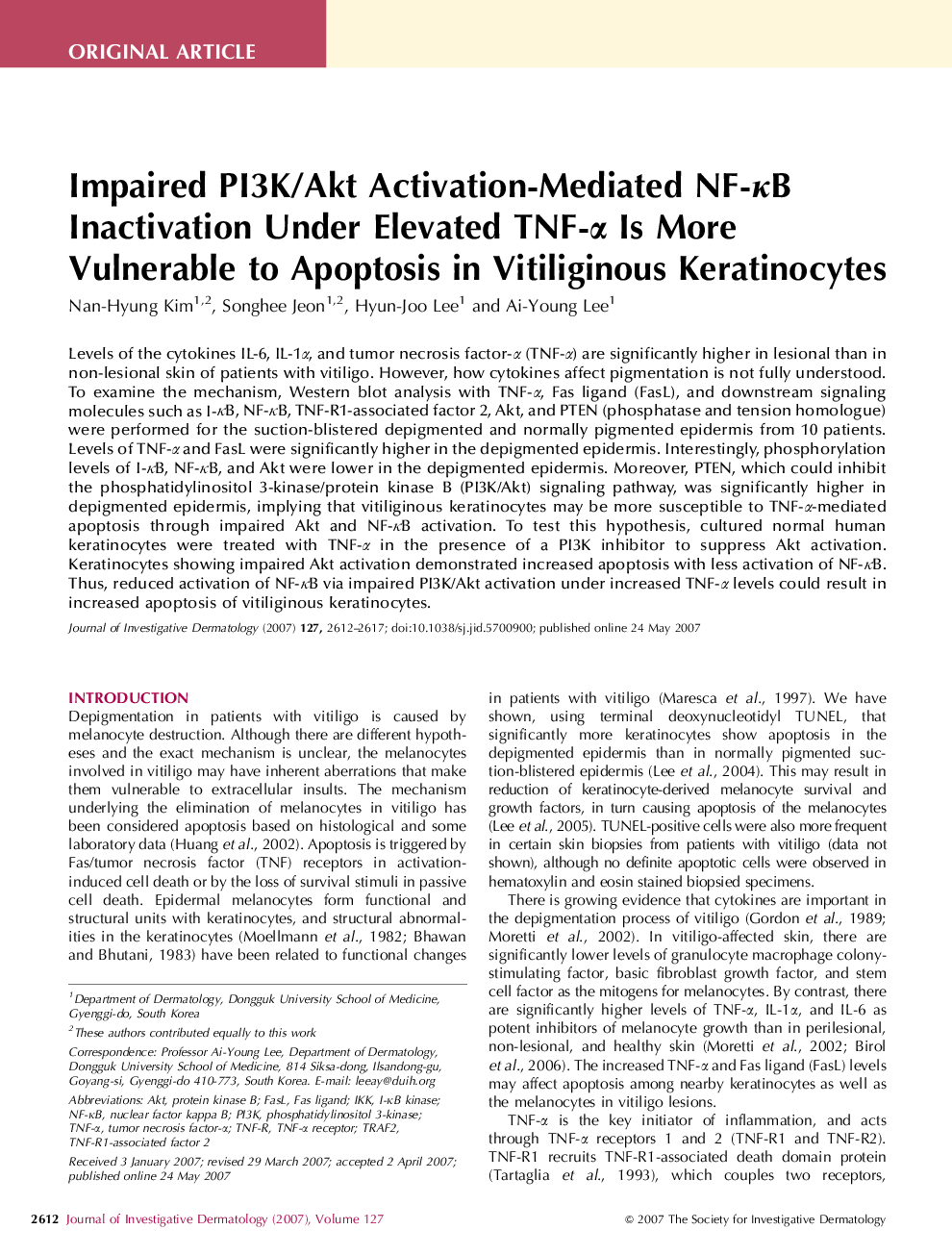| Article ID | Journal | Published Year | Pages | File Type |
|---|---|---|---|---|
| 3217344 | Journal of Investigative Dermatology | 2007 | 6 Pages |
Abstract
Levels of the cytokines IL-6, IL-1α, and tumor necrosis factor-α (TNF-α) are significantly higher in lesional than in non-lesional skin of patients with vitiligo. However, how cytokines affect pigmentation is not fully understood. To examine the mechanism, Western blot analysis with TNF-α, Fas ligand (FasL), and downstream signaling molecules such as I-κB, NF-κB, TNF-R1-associated factor 2, Akt, and PTEN (phosphatase and tension homologue) were performed for the suction-blistered depigmented and normally pigmented epidermis from 10 patients. Levels of TNF-α and FasL were significantly higher in the depigmented epidermis. Interestingly, phosphorylation levels of I-κB, NF-κB, and Akt were lower in the depigmented epidermis. Moreover, PTEN, which could inhibit the phosphatidylinositol 3-kinase/protein kinase B (PI3K/Akt) signaling pathway, was significantly higher in depigmented epidermis, implying that vitiliginous keratinocytes may be more susceptible to TNF-α-mediated apoptosis through impaired Akt and NF-κB activation. To test this hypothesis, cultured normal human keratinocytes were treated with TNF-α in the presence of a PI3K inhibitor to suppress Akt activation. Keratinocytes showing impaired Akt activation demonstrated increased apoptosis with less activation of NF-κB. Thus, reduced activation of NF-κB via impaired PI3K/Akt activation under increased TNF-α levels could result in increased apoptosis of vitiliginous keratinocytes.
Related Topics
Health Sciences
Medicine and Dentistry
Dermatology
Authors
Nan-Hyung Kim, Songhee Jeon, Hyun-Joo Lee, Ai-Young Lee,
